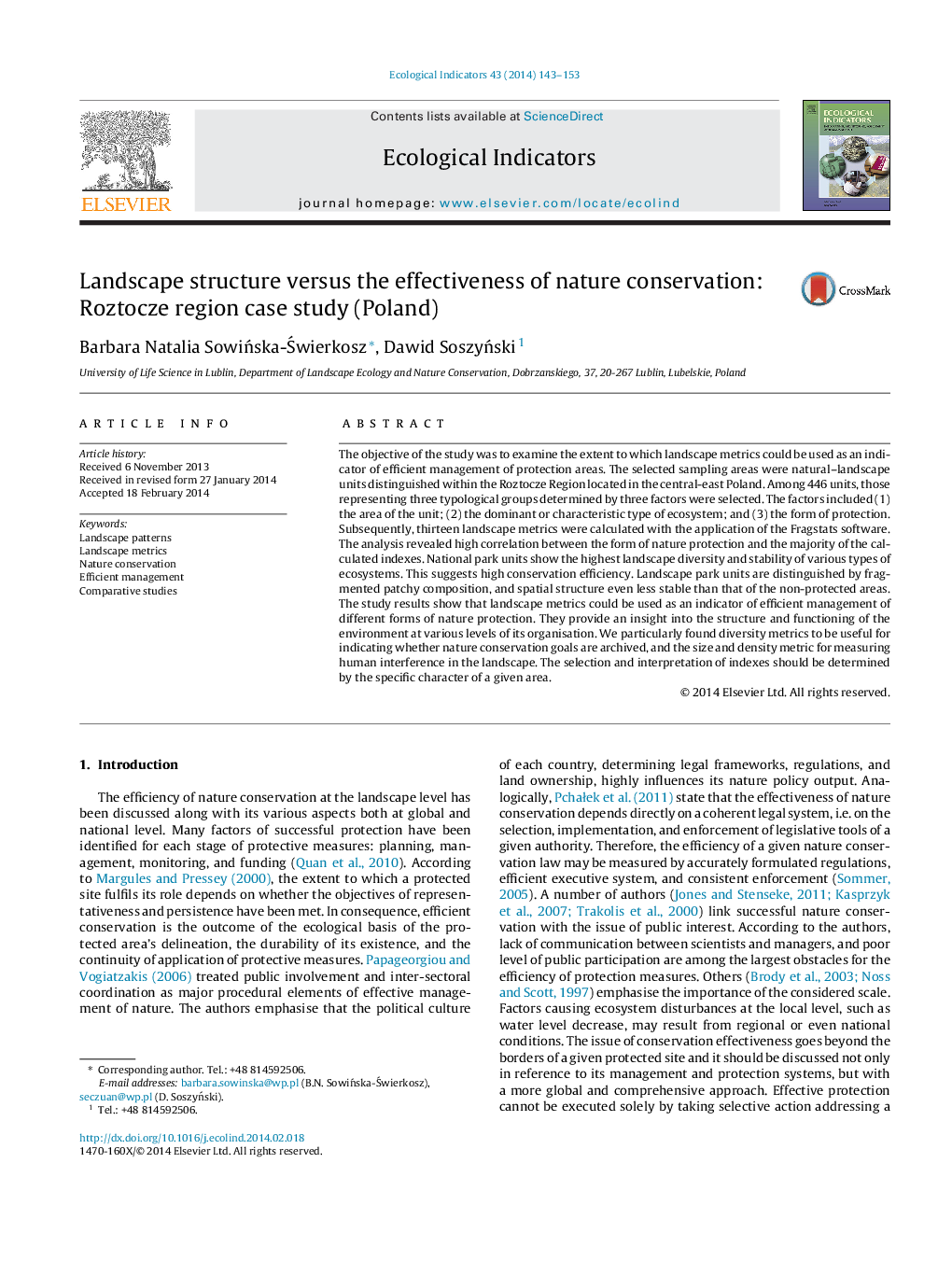| Article ID | Journal | Published Year | Pages | File Type |
|---|---|---|---|---|
| 4373166 | Ecological Indicators | 2014 | 11 Pages |
The objective of the study was to examine the extent to which landscape metrics could be used as an indicator of efficient management of protection areas. The selected sampling areas were natural–landscape units distinguished within the Roztocze Region located in the central-east Poland. Among 446 units, those representing three typological groups determined by three factors were selected. The factors included (1) the area of the unit; (2) the dominant or characteristic type of ecosystem; and (3) the form of protection. Subsequently, thirteen landscape metrics were calculated with the application of the Fragstats software. The analysis revealed high correlation between the form of nature protection and the majority of the calculated indexes. National park units show the highest landscape diversity and stability of various types of ecosystems. This suggests high conservation efficiency. Landscape park units are distinguished by fragmented patchy composition, and spatial structure even less stable than that of the non-protected areas. The study results show that landscape metrics could be used as an indicator of efficient management of different forms of nature protection. They provide an insight into the structure and functioning of the environment at various levels of its organisation. We particularly found diversity metrics to be useful for indicating whether nature conservation goals are archived, and the size and density metric for measuring human interference in the landscape. The selection and interpretation of indexes should be determined by the specific character of a given area.
